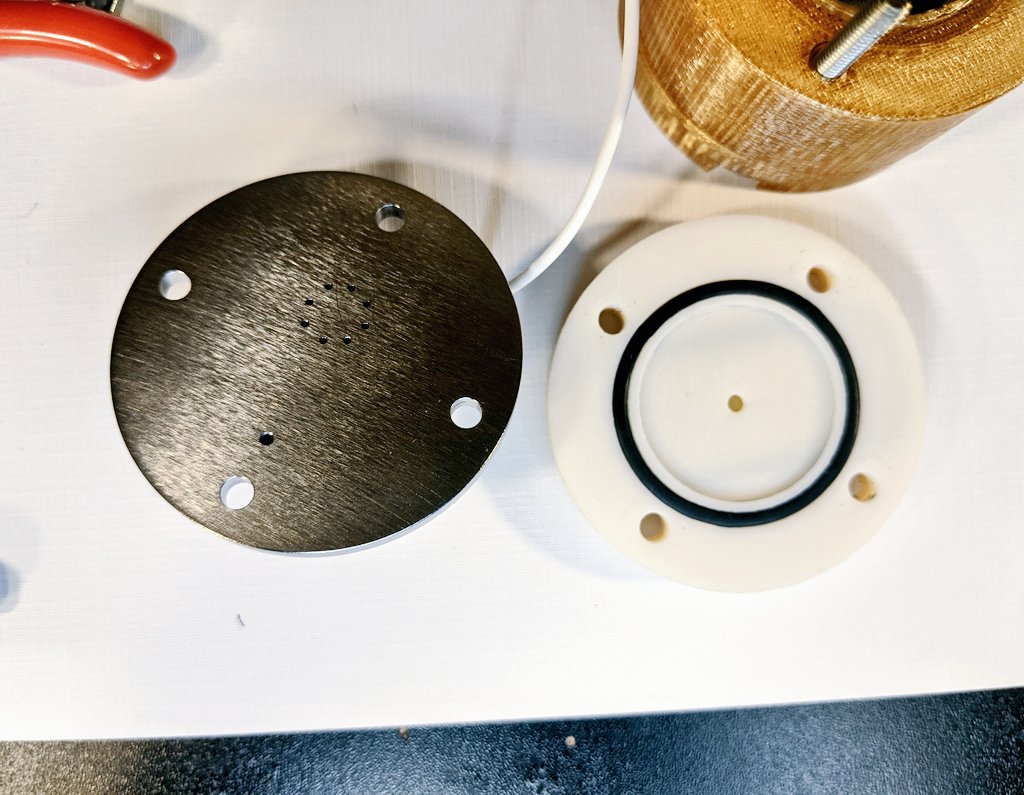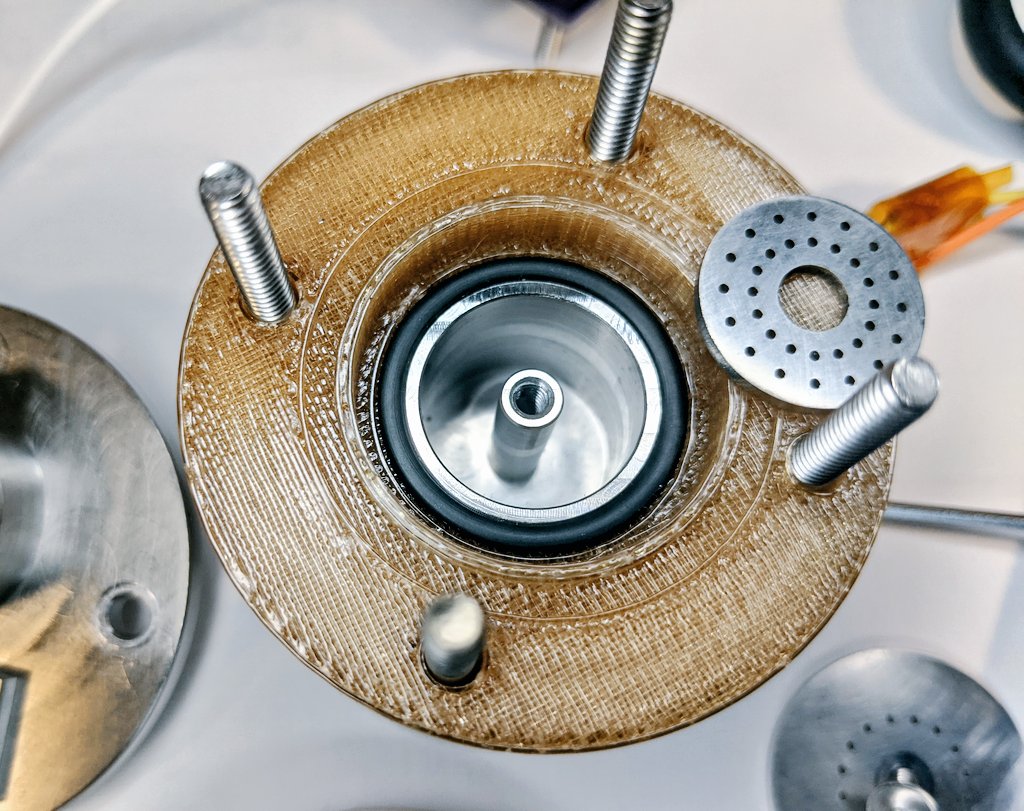I have started to prep the EHT1 Micro End-Hall Thruster for the next upcoming live test this weekend, this time looking to ignite the experimental GDN1 hollow cathode neutralizer! Livestream details to be released tomorrow but let’s take a look at the thruster after its first successful run this past weekend!
As a recap, the EHT1 was run with a tungsten filament neutralizer. You can find the details of the test HERE. Inspecting the thruster, we can first see evidence of sputtering from the filament, which is to be expected, as well as a bit of bubbling on the Ultem anode feed next to the thruster head due to the heat of the filament.

Looking into the thruster head however, I see even more evidence to back up ignition observations from the test. We can see very clear and focused electron bombardment of the gas baffle with a black spot the shape of the permanent magnet underneath. This is very exciting to see, especially since the test produced actual beam on the Faraday cup!

Looking at the back of the thruster head and top section of the fuel valve housing, I also see no evidence of discoloration or plasma backstreaming damage, showing that the gas distribution baffle and flow path is functioning as designed!

Finally, cracking open the SFDS I see that the Adamantane fuel has undergone complete sublimation and 100% fuel utilization with no evidence of leftover, residue, recondensed fuel, or effects of heating the fuel. This is absolutely fantastic for this new fuel and delivery system!
Overall, this was an incredibly exciting and successful first run for this highly experimental, low-cost, ultra-compact Hall thruster. Stay tuned for updates on the next big test, this time looking to qualify the GDN1 Glow-Discharge Hollow Cathode Neutralizer!


